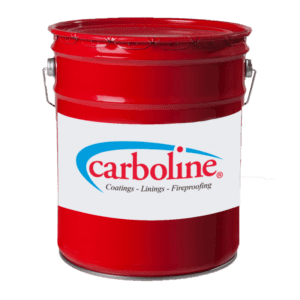Digesters
A digester, in the context of wastewater treatment, refers to a specialized tank or vessel used to facilitate the decomposition and stabilization of organic matter contained in sludge. This process is known as anaerobic digestion. Here are key aspects of digesters:
Function: The primary function of a digester is to create an oxygen-free environment where anaerobic microorganisms can break down organic matter in sludge, producing biogas (mainly methane and carbon dioxide) and stabilizing the sludge. Anaerobic digestion reduces the volume of sludge, destroys pathogens, and produces a stabilized end-product that can be safely disposed of or used beneficially.
Anaerobic Digestion Process: Anaerobic digestion occurs in several stages:
Hydrolysis: Complex organic compounds in the sludge are broken down into simpler compounds by hydrolytic bacteria.
Acidogenesis: Simple organic compounds are converted into volatile fatty acids and other intermediate products by acid-forming bacteria.
Acetogenesis: Volatile fatty acids are converted into acetic acid, hydrogen, and carbon dioxide by acetogenic bacteria.
Methanogenesis: Methanogenic bacteria convert acetic acid, hydrogen, and carbon dioxide into methane and carbon dioxide, producing biogas as a byproduct.
Types of Digesters:
Conventional Anaerobic Digesters: These digesters are typically heated and insulated tanks where sludge is maintained at a specific temperature (usually around 35-40°C) to optimize microbial activity.
High-Rate Anaerobic Digesters: These digesters are designed to operate at shorter retention times and higher loading rates, achieving higher gas production rates and requiring smaller tank volumes.
Anaerobic Membrane Bioreactors (AnMBRs): AnMBRs combine anaerobic digestion with membrane filtration to separate solids and produce high-quality effluent suitable for reuse.
Biogas Production: One of the key byproducts of anaerobic digestion is biogas, which consists mainly of methane and carbon dioxide. Biogas can be captured, treated, and utilized as a renewable energy source for heating, electricity generation, or vehicle fuel.
Digestate: The solid residue remaining after anaerobic digestion, known as digestate, is rich in nutrients and organic matter. Depending on its characteristics, digestate can be used as a soil amendment, fertilizer, or feedstock for composting or further processing.
Maintenance: Regular maintenance of digesters is essential to ensure optimal performance and prevent issues such as sludge buildup, foaming, or odors. Maintenance tasks may include cleaning, inspection, repair of mechanical components, and monitoring of operating parameters.
Safety Considerations: Digesters can pose safety hazards due to the production of flammable biogas and the presence of potentially harmful gases such as hydrogen sulfide. Proper safety measures, including gas monitoring, ventilation, and confined space procedures, are essential to protect workers and prevent accidents.
Overall, digesters play a crucial role in the treatment and management of sludge generated in wastewater treatment plants, offering environmental and economic benefits through the production of biogas and the stabilization of sludge for safe disposal or beneficial use. Proper design, operation, and maintenance are essential to maximize digester performance and ensure safe and efficient operation.
Showing all 6 results
-
![Carboguard 690: Moisture Tolerant Epoxy for W&WW Industry - Light Grey, 20L [color, packaging]](https://b3494200.smushcdn.com/3494200/wp-content/uploads/2024/04/Carboline-paint-drum-179-300x300.png?lossy=2&strip=1&webp=1)
Carboguard 690: Moisture Tolerant Epoxy for W&WW Industry
Select options -
![Carboguard 893 SG - 2C Zinc Phosphate Epoxy for Water/Wastewater - 10L, Light Grey [packaging, color]](https://b3494200.smushcdn.com/3494200/wp-content/uploads/2024/04/Carboline-paint-drum-173-300x300.png?lossy=2&strip=1&webp=1)
Carboguard 893 SG – 2C Zinc Phosphate Primer | Water/Wastewater
Select options -
![Carboline Carboguard 891 VOC: Potable Water Epoxy for W&WW - 20L, Grey [packaging, color]](https://b3494200.smushcdn.com/3494200/wp-content/uploads/2024/04/Carboline-paint-drum-192-300x300.png?lossy=2&strip=1&webp=1)
Carboline Carboguard 891 VOC: Potable Water Epoxy for W&WW
Select options -
![Carboline Carbomastic 652 Heavy Duty Anti-Corrosive Epoxy Coating - 20L, Grey [packaging, color]](https://b3494200.smushcdn.com/3494200/wp-content/uploads/2024/04/Carboline-paint-drum-175-300x300.png?lossy=2&strip=1&webp=1)
Carboline Carbomastic 652 Heavy Duty Anti-Corrosive Epoxy Coating
Select options -

Carboline Carbothane 134HP: High Gloss Polyurethane Coating
Select options -
![Carboline Carbozinc 11 - Inorganic Zinc Rich Silicate Primer - Green, 20L [color, packaging]](https://b3494200.smushcdn.com/3494200/wp-content/uploads/2024/04/Carboline-paint-drum-171-300x300.png?lossy=2&strip=1&webp=1)
Carboline Carbozinc 11 – Inorganic Zinc Rich Silicate Primer
Select options